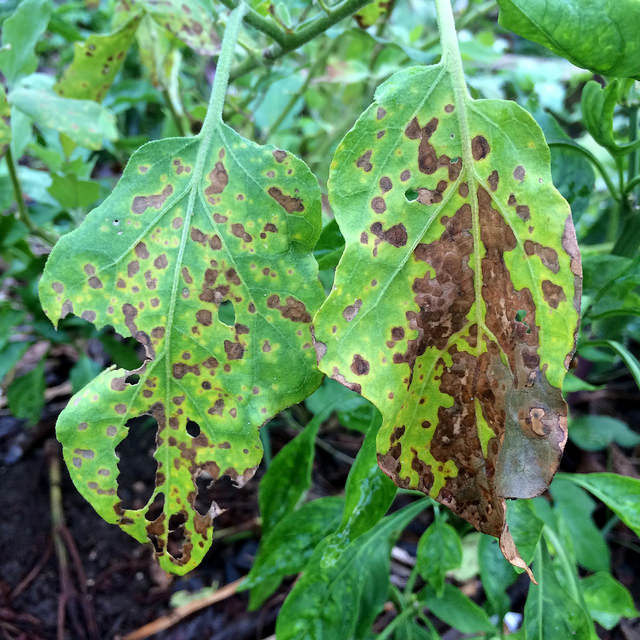
Leaf spot and Phomopsis cane
Phomopsis viticola
Also Known As - Phomopsis cane and leaf spotWhat is Phomopsis cane (Phomopsis viticola)?
Phomopsis cane and leaf spot, caused by Phomopsis viticola, is a widespread fungal disease in grape-growing regions. It was previously known as "dead arm" but was later identified as two separate diseases occurring together. Cool, wet weather enhances Phomopsis development, reducing grape quality and yield while weakening vines.
How does Phomopsis cane (Phomopsis viticola) occur?
Phomopsis viticola overwinters in infected vine parts. During rainy spring weather, pycnidia, the fungal fruiting bodies, release spores that infect young shoots, leaves, and clusters through rain splashing. Infection depends on wetness duration and temperature (1-32°C), with optimal conditions at 100% humidity and 23°C. Symptoms emerge on canes in 21-30 days and on leaves in 7-10 days post-infection. Wet weather increases infection risk, while dry and warm summers deactivate the fungus.
Symptoms
1 - Plant Health and Yield
Phomopsis infections can weaken grapevines, reduce their vigor, and lead to a decline in overall plant health. This can result in reduced grape yields and poorer fruit quality, affecting the economic viability of grape production.
2 - Impact on Soil Health and the Environment
• Phomopsis viticola, a fungal pathogen, impacts the soil and environment. It causes the accumulation of fungal inoculum from infected plant debris, influencing fungal diversity.
Solutions
1 -
• Choose well-drained locations with good air circulation for planting. • Prune and remove infected canes and cluster stems during pruning. • Clear the vineyard of infected plant debris to minimize inoculum. • Ensure proper vine spacing and canopy management for improved air movement. • Avoid excessive nitrogen fertilization, which can promote disease susceptibility.
2 - Fungicide Application
Here are some examples of fungicides commonly used to treat phomopsis cane. • Dithiocarbamates: Examples include mancozeb and ziram. • Triazoles: Examples include tebuconazole, propiconazole, and metconazole. • Strobilurins: Examples include azoxystrobin and pyraclostrobin. • Benzimidazoles: Examples include thiophanate-methyl and benomyl. • Phosphorous acid: Examples include fosetyl-aluminum and phosphonic acid salts. It is essential to read and follow the instructions and recommendations provided by the fungicide manufacturer, as well as local regulations and restrictions.
